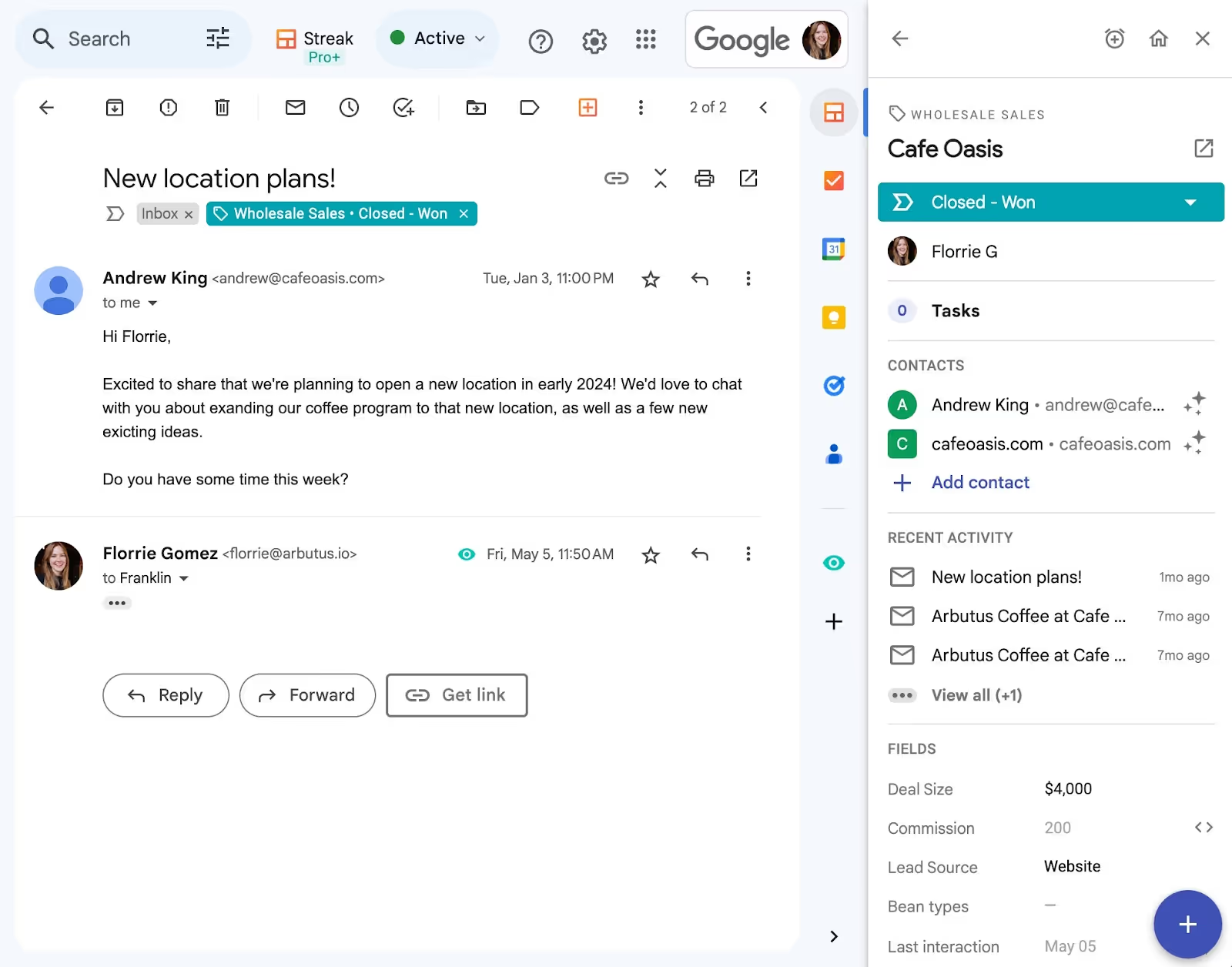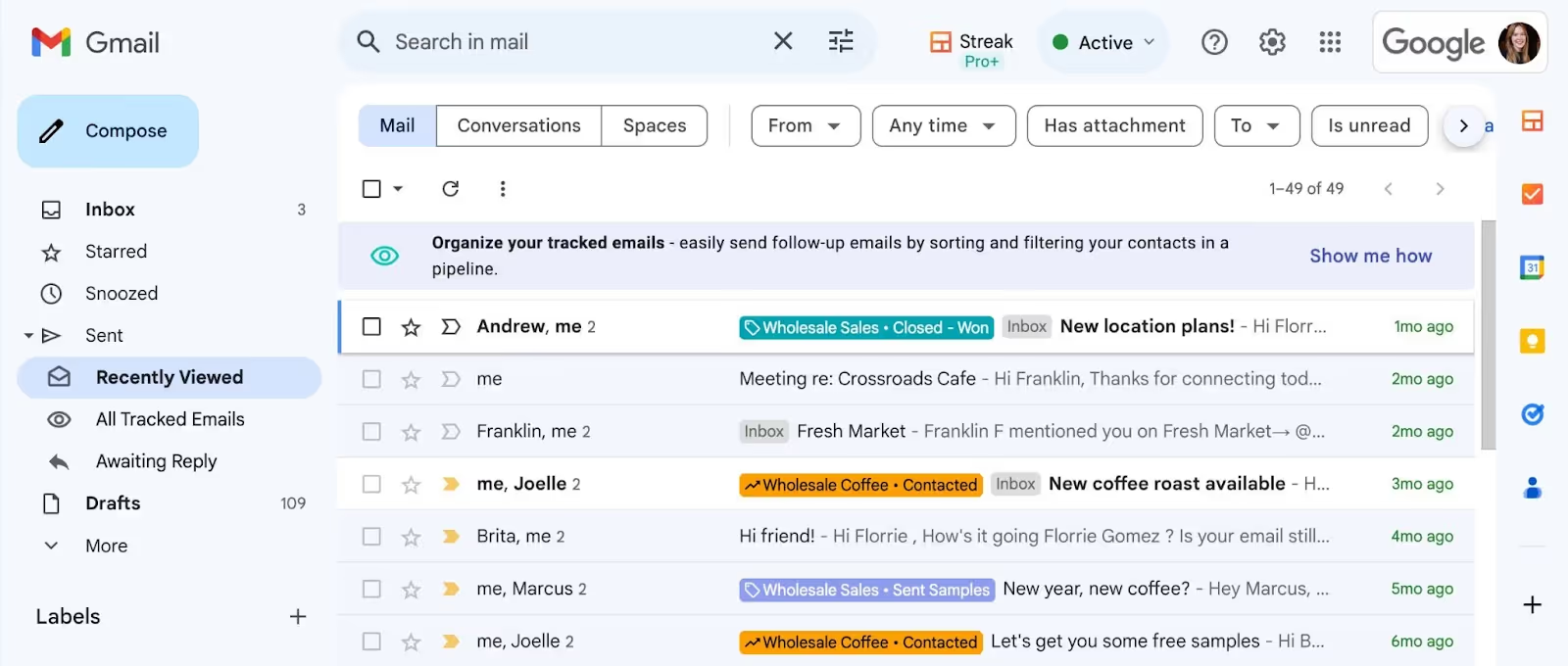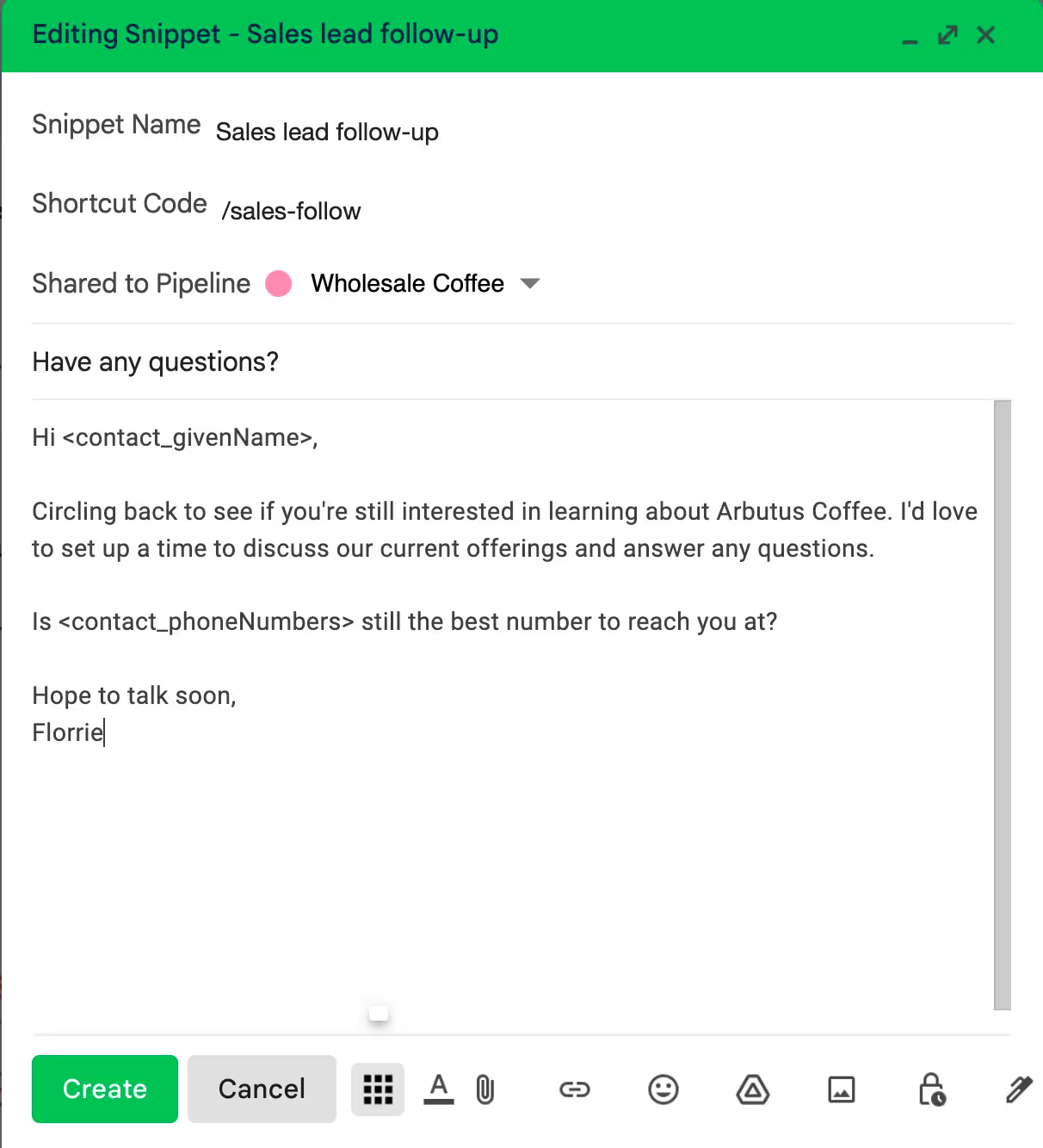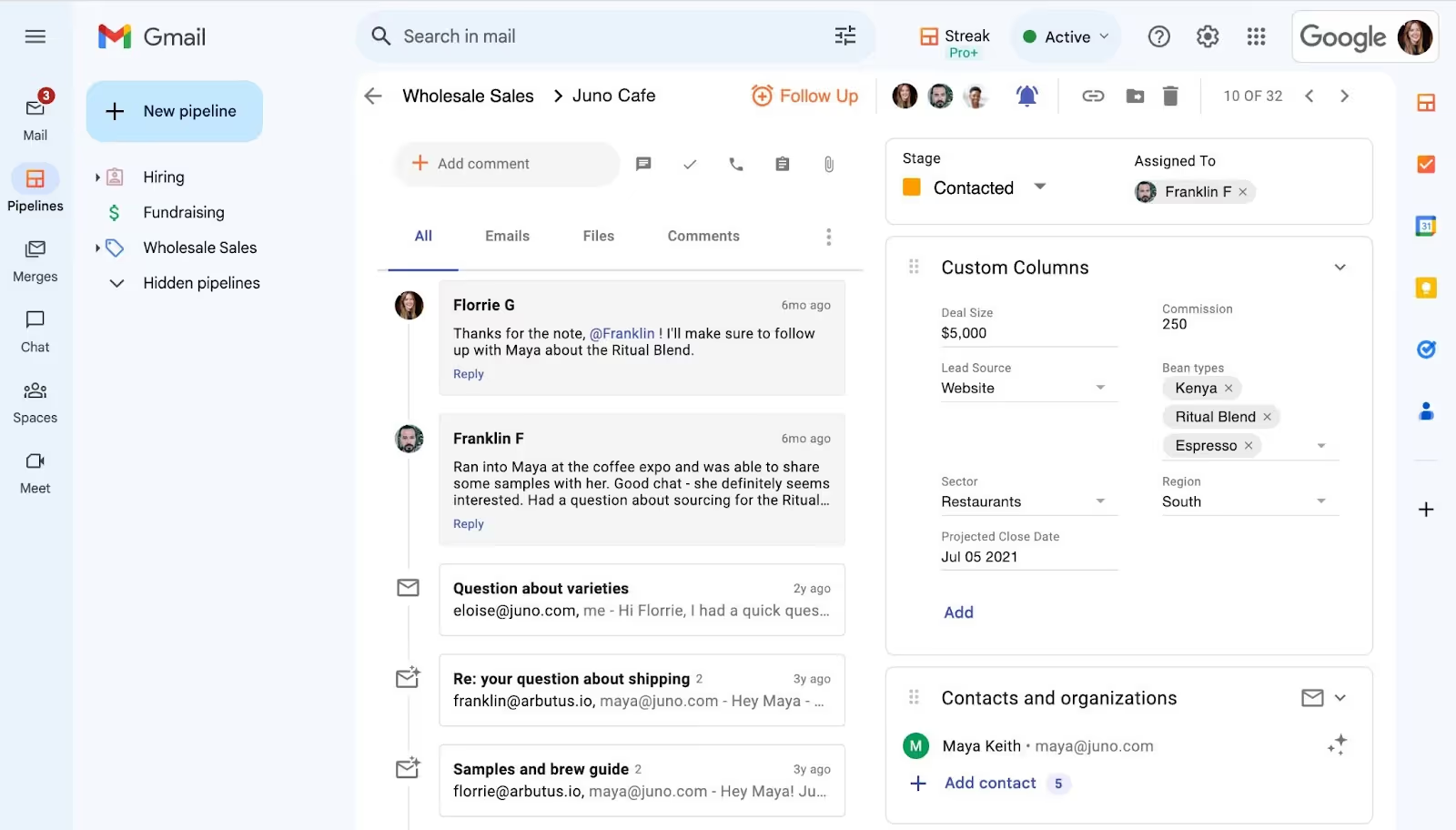Reply to your team’s shared emails
Streak has always let you view your teammate’s shared emails, even if you weren’t included on the email thread. Today we’re launching the ability to reply to those emails as well.
We typically think of email as being used for individual communication, but many businesses also use catch-all emails like sales@company.com or support@company.com. Several employees are often responsible for checking and responding to emails in those general inboxes. But how do you manage that?
One option is using a Collaborative Inbox. Keep reading to discover exactly what Collaborative Inboxes are and whether alternative collaboration methods would work better for your team.
<div class="anchor-wrapper"><div id="google-collaborative-inbox" class="anchor-target"></div></div>
Collaborative Inbox is a feature of Google Workspace that allows teams to use shared email inboxes. Anyone on the team can access this shared Collaborative Inbox, read incoming messages, and send out responses. Team members can even assign email threads to themselves or their fellow collaborators.
Fundamentally, the Collaborative Inbox feature is meant to make it easier for teams to work together within a single inbox. They should be able to seamlessly share the workload of tackling the emails sent to a general company email address.
<div class="anchor-wrapper"><div id="team-use-collaborative-inbox" class="anchor-target"></div></div>
Google’s Collaborative Inbox is a useful tool for businesses that need to manage a high volume of incoming emails from customers, partners, or internal staff. Here's an example of how a company might use it:
Consider a software company that provides customer support. They receive hundreds of emails daily, containing everything from simple queries and feature requests to bug reports. Instead of having these emails sent to one person's inbox, they set up a Google Collaborative Inbox with the address like "support@softwarecompany.com".
All incoming support emails go to this Collaborative Inbox. Multiple members of the support team have access to this inbox, allowing them to monitor incoming messages, assign emails to the team member most suited to respond, track the progress of responses, and ensure all customer queries are handled efficiently.
Using a Collaborative Inbox, the team can also categorize emails by issue type, priority, etc., and use these labels to filter and search for specific threads. This centralized approach increases team collaboration, improves response times, and ensures no request is overlooked.
<div class="anchor-wrapper"><div id="collaborative-inbox-work" class="anchor-target"></div></div>
Collaborative Inbox is offered as a feature of Google Groups, which can help you manage incoming emails for a team. This feature allows you to create an email address that members of the group can access, respond to, and manage.
Here's how it works:
The first step is to create a Google Group. This could be something like "support@yourcompany.com".
Once the group is created, you set the group type to "Collaborative Inbox" in the group settings.
You can then add members to the group and define their roles. Members can be managers, who have full control over all settings and messages; content managers, who can moderate content and members; or just standard members.
All emails sent to the group email address become "topics" in the Collaborative Inbox. These topics can be assigned to specific group members for follow-up. Members can also mark topics as "complete" when they're done, or they can leave them "open" if further action is needed. Members can even add tags to topics to categorize them.
When replying to a topic, members can choose to reply as the group email address (e.g., "support@yourcompany.com") instead of their personal address, providing a unified front to customers or whoever is emailing the group.
Managers can define who can view, post, and reply to topics in the group, including people outside the organization. This allows for control over who has access to the group and the messages in it.
Using Google Groups' Collaborative Inbox feature, you can manage and distribute the workload among your team members, ensure that all messages are addressed, and improve your team's communication and efficiency.
<div class="anchor-wrapper"><div id="pros-cons-collaborative" class="anchor-target"></div></div>
Like any tool, Collaborative Inbox has its pros and cons. Weigh them all to determine if this is the right collaboration option for your team.
<div class="anchor-wrapper"><div id="better-inbox-streak" class="anchor-target"></div></div>
Streak is a Google Chrome extension that offers a CRM (Customer Relationship Management) tool that’s integrated directly with Gmail. It provides additional functionalities compared to Google's Collaborative Inbox, making it potentially a better option for managing shared inboxes, especially for growing businesses with more advanced needs.
Here are some of the benefits of using Streak to help your team collaborate in Gmail:
As an extension built right into Gmail, Streak helps you organize your conversations and processes into clear pipelines.

Your team can automatically add and share all of their emails related to a specific contact or item (a sales lead, support ticket, job candidate, etc.) in a shared pipeline for Sales, Support, Hiring, etc.
With email sharing enabled, everyone sees all the emails related to the item you’re tracking — whether those emails are in their inbox or someone else’s. Within the pipeline, you’ll find all of your team’s relevant messages in chronological order.
Team members can even reply to shared emails that they didn’t personally receive using Streak’s reply all feature. This option to answer on behalf of other group members comes in especially useful when someone is out sick or on leave.

Once you add emails to your pipelines, you’ll also find helpful labels in your inbox and details about each deal next to the email thread for quick context at your fingertips.
Streak has built-in email tracking which lets you know when your emails have been read so you can identify your most engaged contacts and follow-up when they’re active.

You’ll be able to find all of the emails that were recently viewed by your recipients in a separate Recently Viewed folder so you can prioritize your work or follow-up in bulk.
This is not available in Google's Collaborative Inbox.
It’s true, Gmail allows you to create canned responses that help you quickly follow up on common questions and inquiries.

The real power of Streak’s Snippets feature is the ability to create and share Snippets across a team. Sharing snippets helps your team message important information with consistency and accuracy, and makes it a breeze to update information like a link or policy in your email communication.
Each item within a pipeline is called a box, because Streak creates a collaborative workspace where your team can leave comments, create and assign tasks, and attach additional files in the boxes.

This additional space for collaboration makes Streak boxes the go-to source for details about a deal, support ticket, or anything else you’re tracking in shared inboxes.
Need to respond to multiple people with the same request or question, or update a group of people in your inbox with the same information?

Streak’s mail merge allows you to send personalized, mass emails from your Gmail inbox. Use variables to address contacts by name or refer to a specific detail and schedule automatic follow up to boost engagement.
<div class="anchor-wrapper"><div id="best-collaboration-option" class="anchor-target"></div></div>
Teams trying to work together within a single inbox have a few options. Google’s free Google Collaborative Inboxes are a reliable, albeit lightweight, shared inbox tool.
For businesses requiring more advanced collaborative and CRM features like customer or project tracking, Streak provides a more comprehensive, streamlined solution than Google's Collaborative Inbox.
Streak transforms your Gmail into a powerful, all-in-one workspace, providing email sharing, pipeline organization, email tracking, and mail merge capabilities right in your inbox. It seamlessly integrates with other Google Workspace tools, allowing you to manage your tasks, files, and schedules effortlessly without leaving Gmail.
Try collaborating in Streak for free today.
